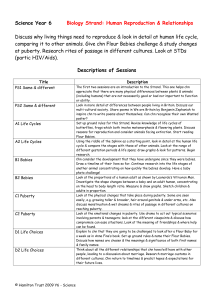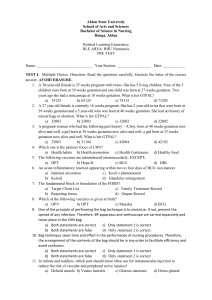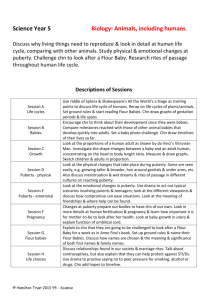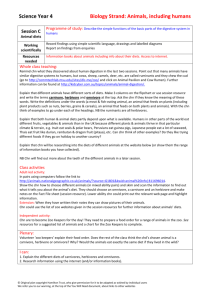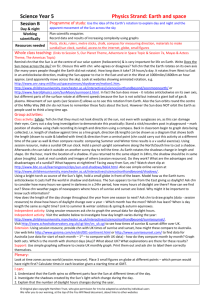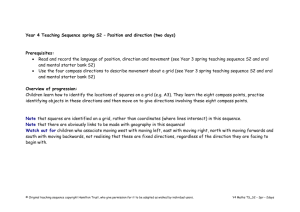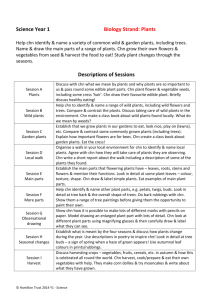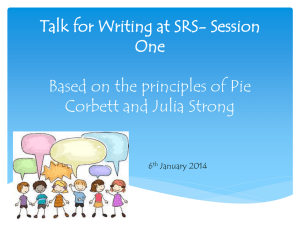Life cycles 2 Session
advertisement
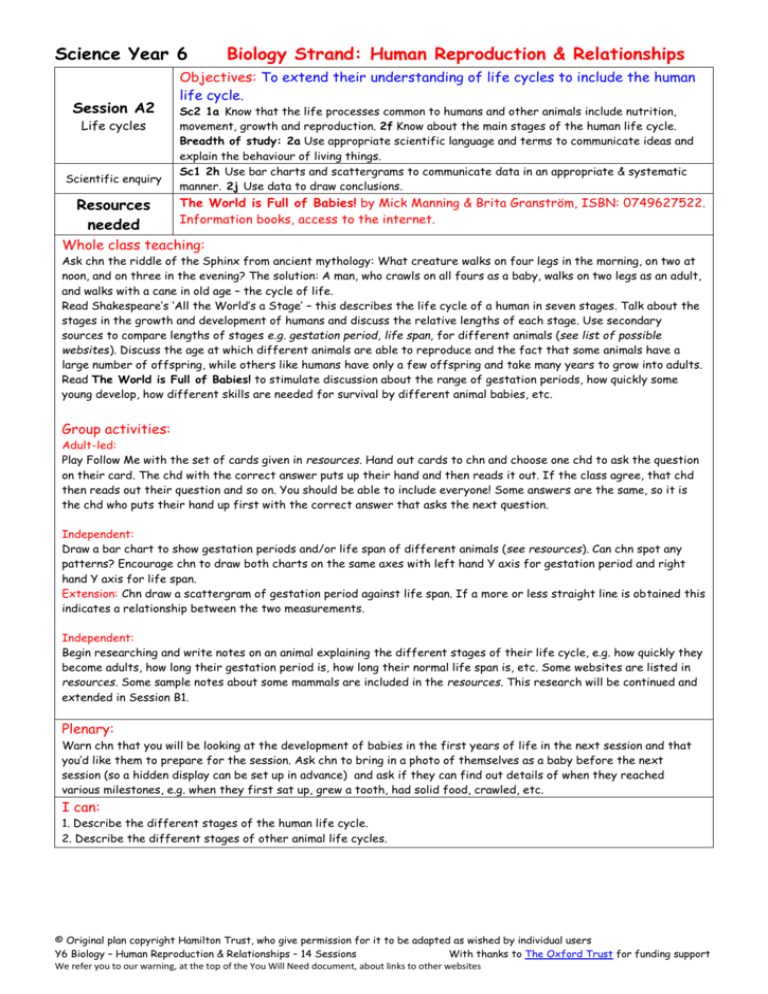
Science Year 6 Session A2 Life cycles Scientific enquiry Resources needed Biology Strand: Human Reproduction & Relationships Objectives: To extend their understanding of life cycles to include the human life cycle. Sc2 1a Know that the life processes common to humans and other animals include nutrition, movement, growth and reproduction. 2f Know about the main stages of the human life cycle. Breadth of study: 2a Use appropriate scientific language and terms to communicate ideas and explain the behaviour of living things. Sc1 2h Use bar charts and scattergrams to communicate data in an appropriate & systematic manner. 2j Use data to draw conclusions. The World is Full of Babies! by Mick Manning & Brita Granström, ISBN: 0749627522. Information books, access to the internet. Whole class teaching: Ask chn the riddle of the Sphinx from ancient mythology: What creature walks on four legs in the morning, on two at noon, and on three in the evening? The solution: A man, who crawls on all fours as a baby, walks on two legs as an adult, and walks with a cane in old age – the cycle of life. Read Shakespeare’s ‘All the World’s a Stage’ – this describes the life cycle of a human in seven stages. Talk about the stages in the growth and development of humans and discuss the relative lengths of each stage. Use secondary sources to compare lengths of stages e.g. gestation period, life span, for different animals (see list of possible websites). Discuss the age at which different animals are able to reproduce and the fact that some animals have a large number of offspring, while others like humans have only a few offspring and take many years to grow into adults. Read The World is Full of Babies! to stimulate discussion about the range of gestation periods, how quickly some young develop, how different skills are needed for survival by different animal babies, etc. Group activities: Adult-led: Play Follow Me with the set of cards given in resources. Hand out cards to chn and choose one chd to ask the question on their card. The chd with the correct answer puts up their hand and then reads it out. If the class agree, that chd then reads out their question and so on. You should be able to include everyone! Some answers are the same, so it is the chd who puts their hand up first with the correct answer that asks the next question. Independent: Draw a bar chart to show gestation periods and/or life span of different animals (see resources). Can chn spot any patterns? Encourage chn to draw both charts on the same axes with left hand Y axis for gestation period and right hand Y axis for life span. Extension: Chn draw a scattergram of gestation period against life span. If a more or less straight line is obtained this indicates a relationship between the two measurements. Independent: Begin researching and write notes on an animal explaining the different stages of their life cycle, e.g. how quickly they become adults, how long their gestation period is, how long their normal life span is, etc. Some websites are listed in resources. Some sample notes about some mammals are included in the resources. This research will be continued and extended in Session B1. Plenary: Warn chn that you will be looking at the development of babies in the first years of life in the next session and that you’d like them to prepare for the session. Ask chn to bring in a photo of themselves as a baby before the next session (so a hidden display can be set up in advance) and ask if they can find out details of when they reached various milestones, e.g. when they first sat up, grew a tooth, had solid food, crawled, etc. I can: 1. Describe the different stages of the human life cycle. 2. Describe the different stages of other animal life cycles. © Original plan copyright Hamilton Trust, who give permission for it to be adapted as wished by individual users Y6 Biology – Human Reproduction & Relationships – 14 Sessions With thanks to The Oxford Trust for funding support We refer you to our warning, at the top of the You Will Need document, about links to other websites


